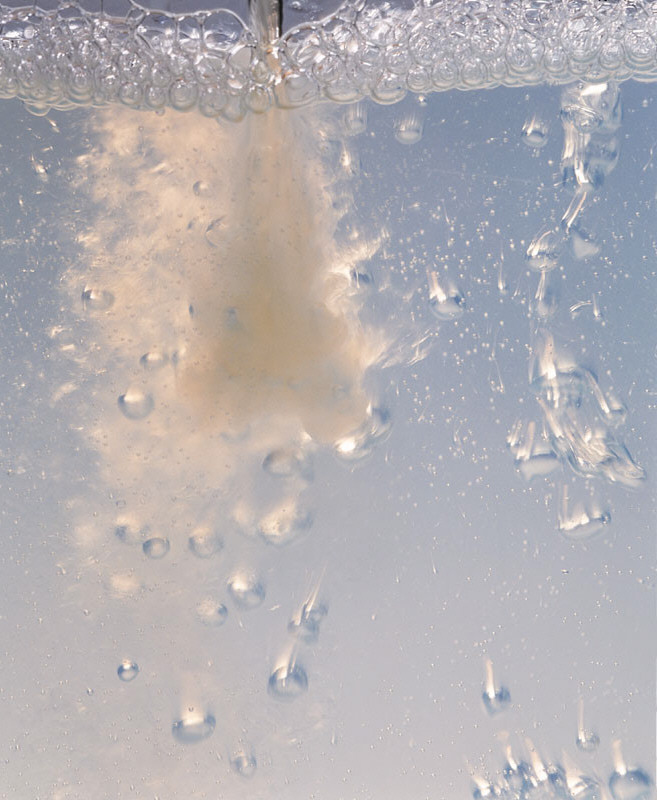How Defoamers Improve Effectiveness in Manufacturing and Manufacturing

Comprehending Defoamers
Defoamers play a vital role in numerous producing procedures by effectively combating the formation of foam, which can interfere with operations and affect product top quality. Foam can occur in many contexts, such as during mixing, home heating, or chain reactions, possibly causing ineffectiveness and inconsistencies in products. The mechanism by which defoamers operate typically includes reducing the surface stress of the fluid, enabling bubbles to integrate and rise to the surface quicker, where they can then burst.
Effective defoamers not only decrease foam development yet additionally keep compatibility with the item, ensuring that there are no damaging effects on the final outcome. Understanding the residential properties and features of defoamers is essential for manufacturers intending to enhance their procedures, boost performance, and preserve the honesty of their products (defoamers).
Trick Advantages of Defoamers
Making use of defoamers in producing procedures offers an array of substantial benefits that improve functional effectiveness and product high quality. Among the key benefits is the reduction of foam development throughout manufacturing, which can block machinery and interfere with process. By decreasing foam, defoamers ensure smoother operations, bring about reduced downtime and upkeep prices.
In addition, defoamers enhance product consistency by stopping air entrapment, which can compromise the honesty of the end product. This is specifically important in markets where visual appearance and appearance are essential, such as in paints, layers, and food items. Boosted product high quality not just satisfies client assumptions yet also reinforces brand name online reputation.
Furthermore, defoamers can help in optimizing source usage. By boosting the performance of resources usage, they add to cost savings and lowered waste, aligning with sustainability objectives. Finally, the application of defoamers can bring about shorter handling times, allowing producers to boost manufacturing capacity without substantial capital financial investment - defoamers.
Applications in Numerous Industries
In making procedures throughout numerous markets, the application of defoamers plays a vital role in improving efficiency and product top quality. These chemical additives are used in fields such as food and beverage, drugs, and textiles to minimize foam-related challenges.
In the food and drink industry, defoamers are necessary throughout the fermentation procedure, stopping foaming that can interrupt manufacturing and ruin the item's integrity. Likewise, in the pharmaceutical field, defoamers are used in the solution of liquid medicines, making sure harmony and security while lessening waste.
Fabric manufacturing additionally gains from defoamers, as they are made use of in dyeing and finishing processes to promote even circulation of chemicals and dyes. This application not just improves the last product's appearance but likewise reduces the amount of water and power taken in during manufacturing.
Additionally, in the paper and pulp industry, defoamers assist maintain procedure effectiveness by decreasing foam that can prevent equipment performance. Overall, the varied applications of defoamers across these sectors highlight their value in maximizing manufacturing processes and providing premium products.

Picking the Right Defoamer
Choosing an appropriate defoamer is essential for optimizing performance and quality in producing processes. The option of defoamer depends upon various factors, including the specific application, the kind of foam being created, and the formula of the product being made.

To start with, consider the chemical compatibility of the defoamer with various other active ingredients in your solution. A defoamer that interacts adversely with other parts can adversely influence product high quality. Furthermore, the temperature and pH array throughout handling are crucial; some defoamers do efficiently under specific conditions while ending up being inadequate in others.
Second of all, evaluate the defoamer's efficiency features, such as its ability to quickly minimize foam and its determination during production. It is important to select an item that not just removes foam rapidly yet also maintains its performance in time.
Last but not least, think about regulative and ecological aspects, especially if your manufacturing process is subject to strict conformity requirements. Picking a low-toxicity or naturally degradable defoamer can assist fulfill sustainability goals while guaranteeing home operational efficiency. By thoughtfully analyzing these criteria, producers can make enlightened choices that improve productivity and product integrity.
Ideal Practices for Execution
Successful execution of defoamers in producing processes needs cautious preparation and adherence to best methods. Initially, it's vital to conduct a thorough analysis of the production environment. This includes recognizing the particular application, the types of frothing representatives present, and the functional conditions. Selecting the ideal defoamer, as formerly reviewed, is vital; ensure it is suitable with the materials entailed and attends to the recognized frothing issues effectively.
Next, preserve clear communication with all stakeholders, including operators and top quality control teams. Educating sessions can assist guarantee that everyone recognizes the application procedures, potential effects on item high quality, and safety considerations. Implementing a trial stage can additionally be valuable; screen performance very closely to determine efficiency and make essential adjustments.
Additionally, routine anchor screening and surveillance of foam degrees can supply useful insights right into the defoamer's efficiency with time. Changing dosages in feedback to modifications in manufacturing variables will help keep optimal effectiveness - defoamers. Documenting all procedures and results advertises continuous renovation, allowing for fine-tuning of defoamer use and improving general efficiency in manufacturing operations.
Final Thought
In summary, defoamers play a crucial role in boosting effectiveness within production and production procedures. By decreasing foam development and helping with bubble coalescence, defoamers contribute to boosted product high quality, consistency, and functional effectiveness.
The benefits prolong to product high quality and expense savings, as defoamers help simplify procedures.Defoamers play a crucial role in different producing processes by effectively combating the development of foam, which can disrupt procedures and influence product top quality. Comprehending the residential properties and features of defoamers is crucial for makers intending to optimize their processes, enhance productivity, and keep the honesty of their products.
Utilizing defoamers in manufacturing procedures provides an array of significant benefits that improve functional effectiveness and item quality.Additionally, defoamers enhance item consistency by stopping air browse around here entrapment, which can jeopardize the honesty of the last product.